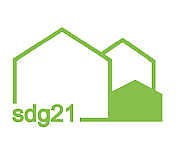Scientific scenarios for climate neutrality support the strategy and planning of companies on the path to decarbonisation - Using the example of buildings and heating, climate economists at DIW Berlin analyse existing scenarios for climate neutrality - Net Zero scenarios show a clear path for the transformation of companies and the financial sector - With standardised scenarios and transition plans for climate neutrality, banks, funds and insurance companies can make their portfolios fit for the future
Scenario analyses on the climate-neutral transformation of the economy strengthen the strategic entrepreneurial orientation on the path to climate neutrality. In this context, scientific scenarios and standardised reports in particular support companies in bringing their own business model in line with the path to climate neutrality and reporting on it transparently. This forward-looking information also helps the financial sector. Banks, funds and other financial institutions can use standardised scenario analyses and reports on climate neutrality to identify transformation risks in good time. Therefore, they can make their own portfolios resilient and climate neutral and invest in companies on the path to climate neutrality at an early stage, shows a study by climate economists at the German Institute for Economic Research (DIW Berlin). "Scenarios are a scientific starting point for companies to identify transformation levers and thus reduce their emissions as quickly as possible," says Fernanda Ballesteros, researcher in the Climate Policy Department at DIW Berlin.

© DIW Berlin
Net Zero scenarios show clear path for companies with building portfolio
Ballesteros, together with Karsten Neuhoff, Head of DIW Climate Policy, and other researchers, analysed eight studies on possible climate neutrality by institutions as diverse as the Federal Environment Agency, the Federation of German Industries and Agora Energiewende. Using the example of companies with building portfolios, they worked out what the scenarios mean for corporate strategy on the path to climate neutrality.
"If the climate neutrality target is brought forward to 2035, the reporting on a resulting stress test scenario must be comparable to the core scenario." Karsten Neuhoff
"In the scenarios, the annual renovation rate increases from the current level of around one percent to at least 1.5 to two percent or well over two percent by 2045," write the authors of the DIW study. "The share of technologies based on renewable energies already reaches 46 to 55 per cent in 2030 and rises to 94 to 100 per cent by 2045, with heat pumps being the dominant technology with around 50 per cent," results the analysis of the scientific studies. After heat pumps, district heating follows as the central technology in the scenarios with a share of about 20 to 30 per cent. "The Net Zero scenarios show a clear path," says Ballesteros. "A company with a building portfolio can use the scenarios to see what it needs to implement in the building sector to reduce emissions and become climate neutral."
Standards for comparable reporting strengthen the financial industry
It is crucial for the climate-neutral transformation of the economy that companies document the transformation with comparable transition indicators. "With standardised scenarios and uniform reporting, companies can also show and explain deviations from net zero scenarios," says Karsten Neuhoff, Head of the Climate Policy Department at DIW Berlin. "This also supports new techniques and innovative strategies, which is why the German government should also advocate internationally for the standardisation of forward-looking reporting standards and scenario frameworks." In order for the financial sector to also use this information for analyses, comparable reporting on a company's core scenario in the current political environment is required, for example climate neutrality in 2045. However, a company's transition plan should also be resilient to changes in climate policy. Neuhoff: "If the goal of climate neutrality is brought forward to 2035, the reporting on a resulting stress test scenario must be comparable to the core scenario."
Background: EU and G20 negotiate standards for forward-looking climate reporting
In the Climate Protection Act, Germany has committed itself to gradually achieving climate neutrality by 2045. Companies from industry and the service sector must therefore change their production and business practices, and financial institutions must adjust their assessment criteria. In many cases, this requires a new strategic orientation and investments in climate-neutral products, business models and production technologies. For this, companies need capital and support from the financial sector, which plays a central role in achieving climate goals.
In order for investors, civil society organisations and public authorities to understand the investment needs, progress and potential risks of companies on the path to carbon neutrality, companies are expected to provide forward-looking reporting based on scientific evidence and standardised procedures. The science works with scenarios that also provide industrial and service companies as well as banks, funds and insurance companies with comparable information about the transition to a climate-neutral business model and resulting risks. With the help of the scenarios, companies can consider the transition risks and opportunities in their investment decisions. The scenarios enable the financial sector to decarbonise the portfolio step by step and to map company-specific transition risks and opportunities in risk management.
International climate reporting frameworks are already laying the groundwork for a common scenario framework and standards for forward-looking reporting on the path to climate neutrality. For example, the frameworks of the international Taskforce on Climate-Related Financial Disclosures of the 20 most important industrialised and emerging economies (G20) and the EU, as well as the UK government's Transition Plan Taskforce. Other relevant processes are the negotiations on the planned disclosure requirements of the EU regulatory proposal CSRD (Corporate Sustainability Reporting Directive) and the global sustainability reporting standards of the ISSB (International Sustainability Standards Board).
Links
Source: PM from 21.6.2023 DIW
Keywords:
CO2-neutral, DE-News, Renewable, European Green Deal, Climate emergency, Climate protection, Sustainable management, SDG 2030
 The Institute for Urban Planning and Social Research WEEBER+PARTNER (Stuttgart) examined 16 case studies and interviewed responsible persons in municipal, cooperative and private housing companies. The projects are characterized by a wide range of planning and construction approaches. According to the study, social diversity requires structural diversity: Rental, social and owner-occupied apartments of different sizes and with diverse layouts were created in the new housing quarters. They are socially mixed - even within buildings - with the respective proportions in the neighbourhood being derived from local requirements. The new quarters also offer space for communal forms of living, for example for older people and those in need of care. And they are characterised by an attractively designed and green residential environment. Concept awards promote the planning and implementation of such projects: Through them, plots of land are not allocated according to the highest price, but for the best concept.
The Institute for Urban Planning and Social Research WEEBER+PARTNER (Stuttgart) examined 16 case studies and interviewed responsible persons in municipal, cooperative and private housing companies. The projects are characterized by a wide range of planning and construction approaches. According to the study, social diversity requires structural diversity: Rental, social and owner-occupied apartments of different sizes and with diverse layouts were created in the new housing quarters. They are socially mixed - even within buildings - with the respective proportions in the neighbourhood being derived from local requirements. The new quarters also offer space for communal forms of living, for example for older people and those in need of care. And they are characterised by an attractively designed and green residential environment. Concept awards promote the planning and implementation of such projects: Through them, plots of land are not allocated according to the highest price, but for the best concept.



